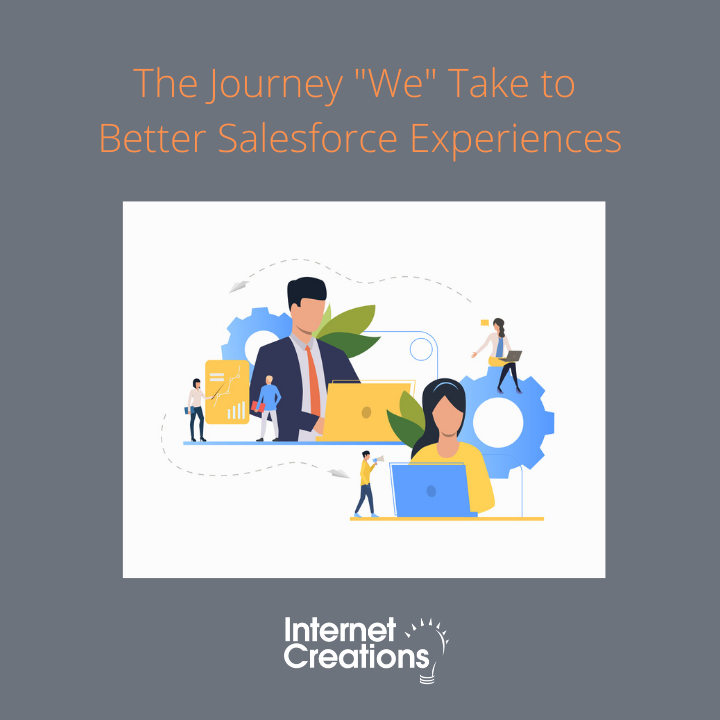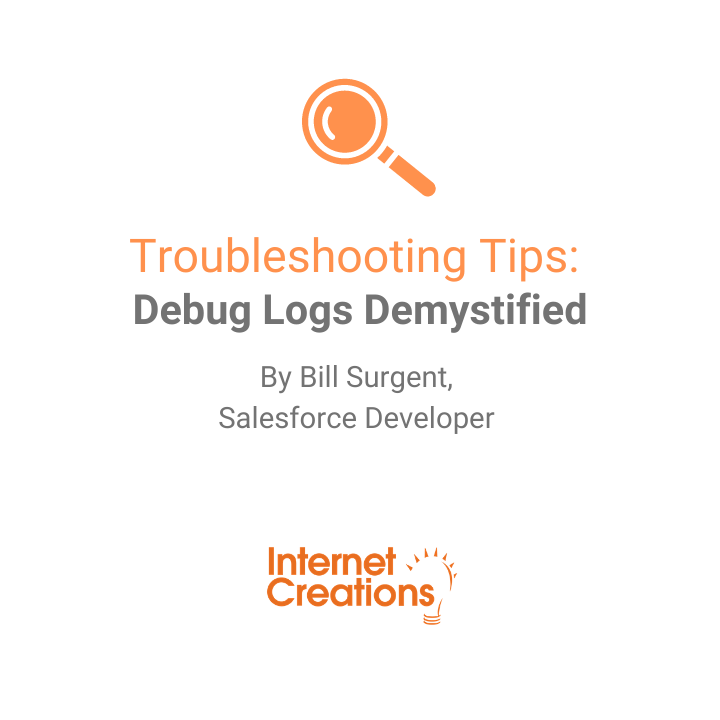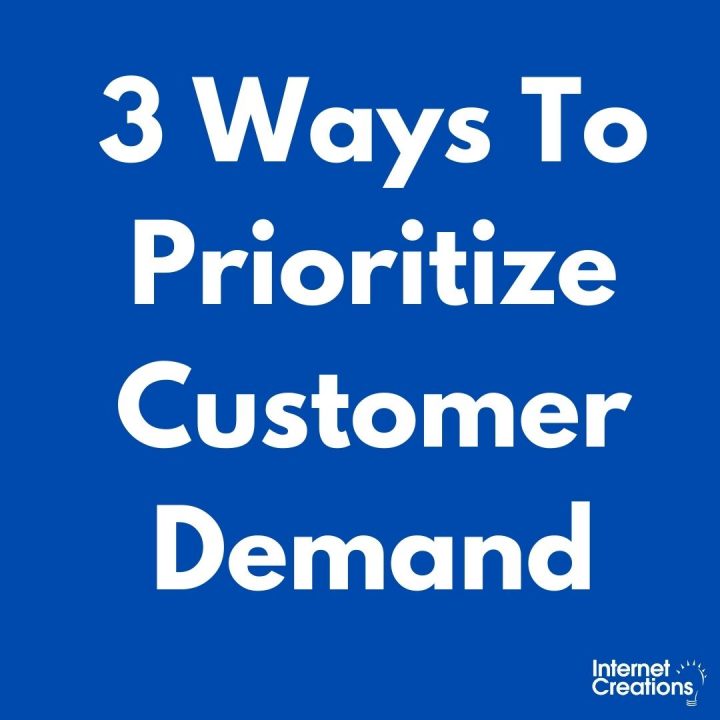Confirmation Bias
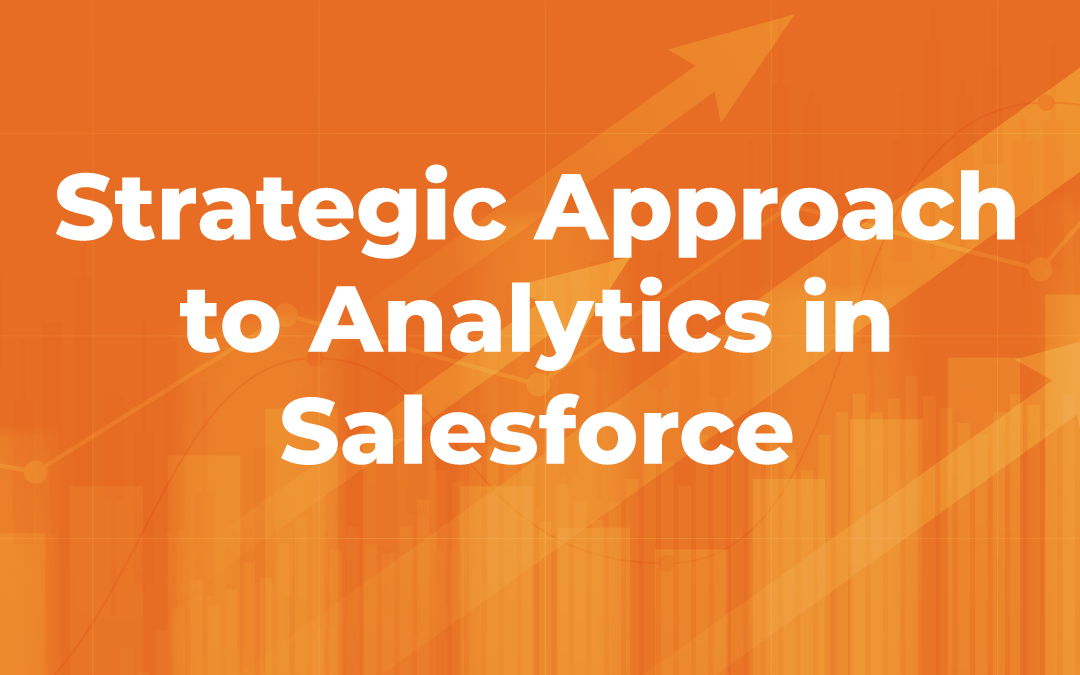
Author’s Note: This blog post is part of the Strategic Approach to Analytics in Salesforce series, which features the strategic approach to analytics of six leaders at Internet Creations. To view the entire series, click here.
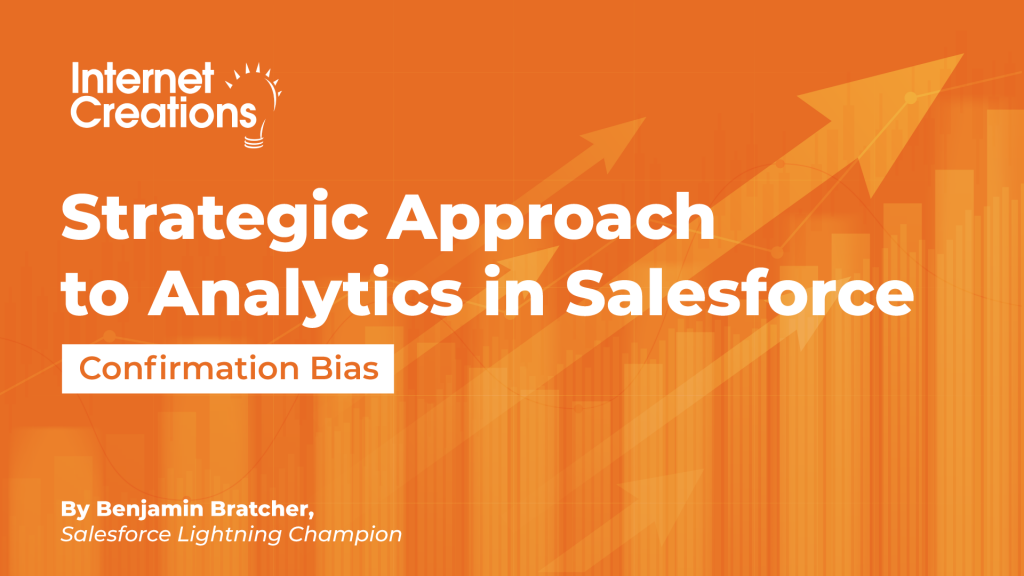
What is confirmation bias?
According to the American Psychological Association (APA), “Confirmation Bias is the tendency to look for information that supports, rather than rejects, one’s preconceptions, typically by interpreting evidence to confirm existing beliefs while rejecting or ignoring any conflicting data.”
In other words, confirmation bias is when you approach analysis or research with a preconceived idea of what the results will be, which can influence your work.
An example of confirmation bias that Anthony Pica provides is receiving certain results in a Google search based on the way you phrase your search term. If your query is “why is Tesla the best car,” then your search results could be filled with articles that confirm your belief, and you might miss out on other perspectives.
Why is confirmation bias bad?
Confirmation bias is bad because you approach analysis in a way that tends to support your position, as opposed to approaching your research with an open mind and allowing your findings to influence your decision making. Confirmation bias is not in the best interest of the company, because you are making decisions based on your own opinion (bias), which is subjective, as opposed to making decisions based on objective evidence. The risk of confirmation bias is that you end up making poor business decisions due to the biases that you have.
On a related note, this is why it’s important to have people in your company who are willing to challenge the status quo. If you only have yes-people in your company, then it can be difficult to make any change.
What are ways that confirmation bias manifests itself?
There are many ways that confirmation can manifest itself. In this section, I will mention several examples provided by the leaders at IC.
In the early days of her career, Felisa Palagi was a data analyst. The senior people at the company would ask her to make the data look a certain way. Felisa makes the point that “you can make the data look however you want,” which is part of the reason why it’s so important to critically assess the dataset, process, and interpretation of the data you’re reviewing.
“Confirmation bias happens because people who believe similarly work together,” says George Guhr. This is a reason why diversity in the workplace is so important. In department meetings, the first person to speak might set the tone of the meeting, and others might instinctively agree with that person, particularly if they hold a higher rank in the company. Now the person who spoke first thinks their idea is the best, when in reality a better idea remains hidden. This is an example Anthony provides of the bandwagon effect creating confirmation bias in a group setting.
Another example of confirmation bias applies to the perception of IC’s work. Internet Creations is known for our focus on service, so it’s easy to assume that most of our business is related to service. But we don’t just work with Service Cloud. In fact, we do a lot of work in Sales Cloud and Experience Cloud as well. Service isn’t just limited to Customer Support; better service transcends the entire company and benefits Sales teams as well. We improve service in all departments.
Confirmation bias is rampant in product management, according to Howard Yermish. For example, he might fall in love with an app idea and then look through the opportunity closed lost reasons to try to prove his case that a certain feature should be prioritized. It’s important to know that you are basing the decisions off of anecdotal evidence. Otherwise, people might assume that there is a greater trend than there actually is. If you can find the data, find it, but if it’s simply anecdotal, it’s important to acknowledge that and be open to other discoveries that might be made by analyzing the data further.
Clearly, there are a lot of ways that confirmation bias can manifest itself, but what can you do about it?
How can we actively work against confirmation bias?
Here are 7 ways to avoid confirmation bias:
- Ask why and challenge assumptions
- Get others’ perspectives
- Be the change you want to see
- Get more data
- Challenge your data
- Listen before forming an opinion
- Trial and error
“If confirmation bias exists, try and change it.”
– George Guhr, Director of Sales
When needing to make important business decisions, you shouldn’t automatically take the data at face value all the time. Instead, try challenging your assumptions, ask why, and dig deeper to brainstorm reasons why the data might be wrong. Consider why things could be happening without assuming it’s due to a certain reason.
Both George and Anthony point out the importance of invoking the perspective of peers or even outsiders. When you are in the thick of a project, it is likely that you have a certain bias based on your work in it. To confront confirmation bias, it can be useful to get a sanity check or have your work proofed by a peer. They will approach it from a fresh perspective and be able to provide you with new insights. As a side note, this is why it’s so important to have quality assurance work done on projects.
As the age old quote goes “Be the change you want to see.” You personally have to start challenging what you see. If you start, maybe others will pick up on that. George suggests asking questions like “Can I see your data set?” or “Can you tell me about the assumptions you had with that analysis?” These are difficult questions and it takes bravery and confidence, but we are all professionals and should be able to challenge each other.
“Data is the weapon against confirmation bias.”
– Howard Yermish, Director of Product
Felisa and Howard suggest getting more data if confronted with confirmation bias. Additional data can provide new insight (or confirmation on our assumptions). However, Felisa warns to take into account the effort any additional analysis might take. You don’t want to get into analysis paralysis or for it to take months to analyze the data in an effort to get it right. According to Felisa, you learn with experience how to strike the right balance between when to dig further and when to run with what you have.
Steve Babula tries to look at his reports in different ways to challenge any bias and confirm that what he’s seeing is correct (e.g. different filters, time frames, etc.). At the very least to make sure the data he is looking at is accurate and grounded in reality. He’s constantly thinking about whether there’s a better way to look at the data in an effort to challenge and tweak it. There needs to be a willingness to scrap what you have and tweak it for the better.
Bias is prevalent in any organization, so it’s important to listen. As a leader, you must consider different opinions and perspectives by listening to the people who have different points of view. Felisa practices listening to others before forming an opinion in an effort to hear all sides of a topic.
Lastly, Felisa notes that you will never 100% get away from bias. You have to try something, see the results, and adjust. Follow scientific testing by changing one variable and reevaluating. Thus, you improve incrementally and continue to make progress.
Stay tuned for more…
If you enjoyed learning about confirmation bias, make sure to subscribe to the Internet Creations blog by entering your information below. You will receive a monthly digest of blog posts including the next blog posts in the Strategic Approach to Analytics in Salesforce series.
Next up, we will be focusing on Tips and Traps with Analytics.
Enter your information to receive monthly updates featuring new posts from Internet Creations’ blog.
- Key Takeaways – Strategic Approach to Analytics - February 10, 2021
- Cross-Departmental Collaboration and Alignment - February 2, 2021
- 22 Tips and Traps with Analytics (with Admin Best Practices) - January 12, 2021
